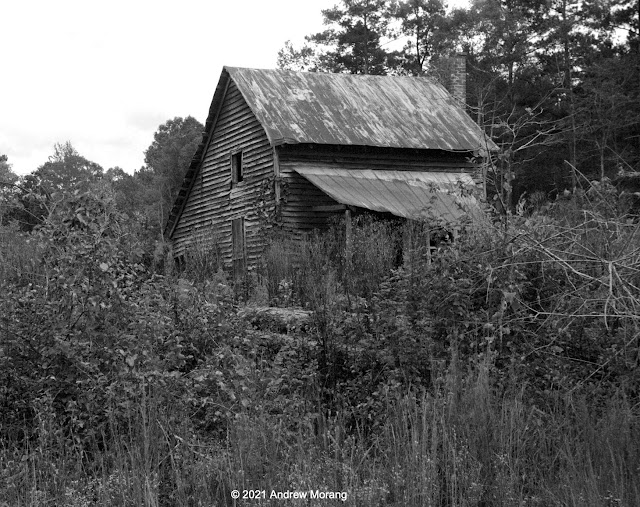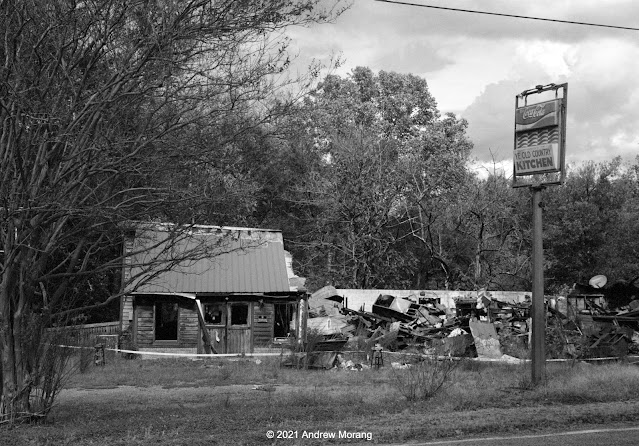Crystal Springs
The City of Crystal Springs is about 20 minutes south of Jackson along Interstate 55. Most people rush by on the interstate, but it is a pleasant community and worth a stop. It looks more prosperous than many other Mississippi towns that I have visited. The city was formed in 1858 when the New Orleans, Jackson and Great Northern Railroad built facilities in the area. Copiah county was known as the "Tomato Capital of the World" because in the late 1930s, the county canned and shipped via rail car more tomatoes than any other county (anywhere in the USA?). You can even attend the Tomato Festival in June.
 |
| Former Wolf Hotel, 1854 West Railroad Ave., Hazelhurst (Kodak Royal Gold 25 film, Leica camera) |
 |
| Crystal Springs in 1920 (from Mississippi Dep. of Archives and History) |
 |
| Wolf Hotel (Kodak Panatomic-X film, Fuji GW690II, 90mm lens) |
I am not sure exactly where the 1920 photograph was taken, but a traveler getting off the train in Crystal Springs may have stayed in the Wolf Hotel. Most towns had a businessman's hotel of this type convenient to the depot. Many (most?) European towns also have Bahnhof hotels, many of which are still in use. I have stayed in many of them over the years.
I talked to some old-timers at the Pawn Shop in the ground floor. They said the upstairs was a mess and they were slowly restoring it. I would have enjoyed exploring, but possibly the floors are not sound. Next trip...
 |
| Warehouse, 501 E. Railroad Ave. (Kodak Royal Gold 25 film, 50mm Summicron-DR, 1/8 ƒ/8) |
 |
| Shop, 345 West Railroad Ave. (Royal Gold 25, 50mm Summicron-DR, 1/8 ƒ/5.6 |
I saw an old corrugated steel warehouse on East Railroad Avenue. Was it once for tomatoes or lumber? Most of it was not photogenic, but I liked the door and steps. An abandoned car repair shop on East Railroad Avenue was also had an interesting door.
Obviously, this has been a cursory look at Crystal Springs. I will revisit soon.
Hazelhurst
Continue south a few miles and you reach the small town of Hazelhurst. This is another Copiah County town whose development was stimulated by construction of the railroad in the 1860s. Again, a bridge across the tracks provided a good viewpoint for a photograph. Some of the commercial buildings in town have been converted into apartments and stores.
 |
| Gallatin Street overpass, Hazelhurst (Moto G5 photograph) |
 |
| View south from Gallatin Street (4×5" Kodak Super-XX film) |
 |
| Lumber warehouse from South Ragsdale Ave. (4×5" Super-XX film, 240mm G-Claron lens, 1/4 ƒ/64, yellow filter) |
Hazelhurst is also a cheerful little town. The big lumber (or tomato?) warehouse next to the tracks was empty, but the commercial stores in town were mostly in use.
A block of old stores on Georgetown Street faces the railroad tracks. These buildings ones have definitely seen better days. The stucco facade is unusual, possibly a renovation some decades ago?
A cow cornerstone! You see some interesting features in small towns.
We will explore some more Mississippi towns in future updates. Thank you for riding along.
















































